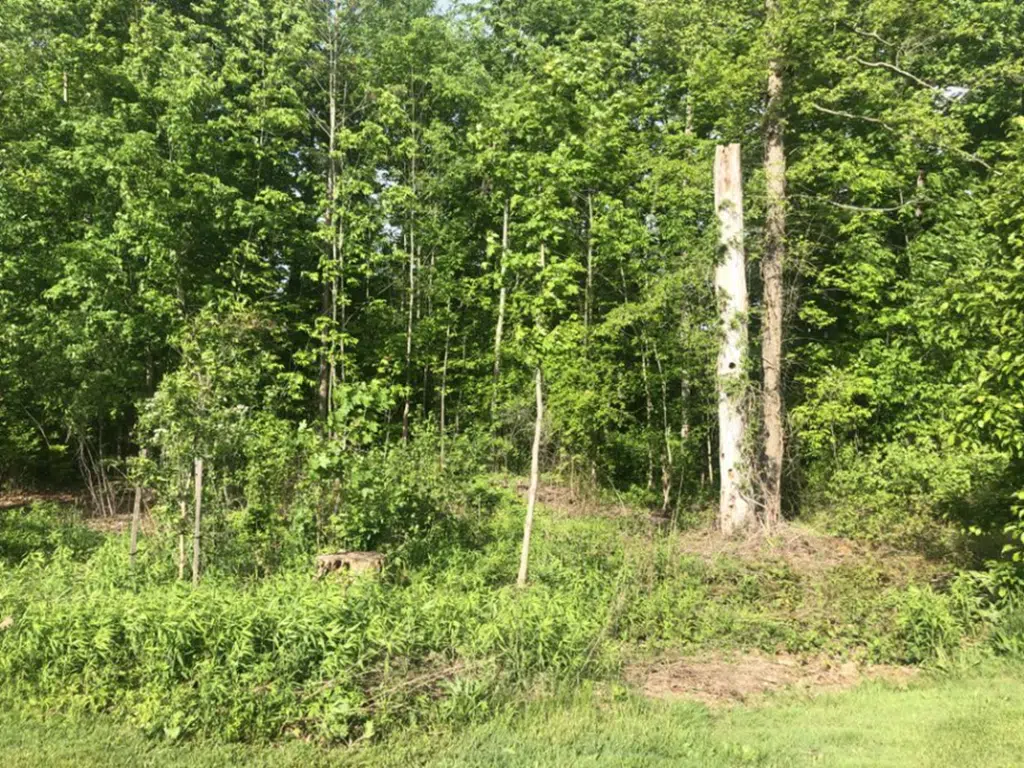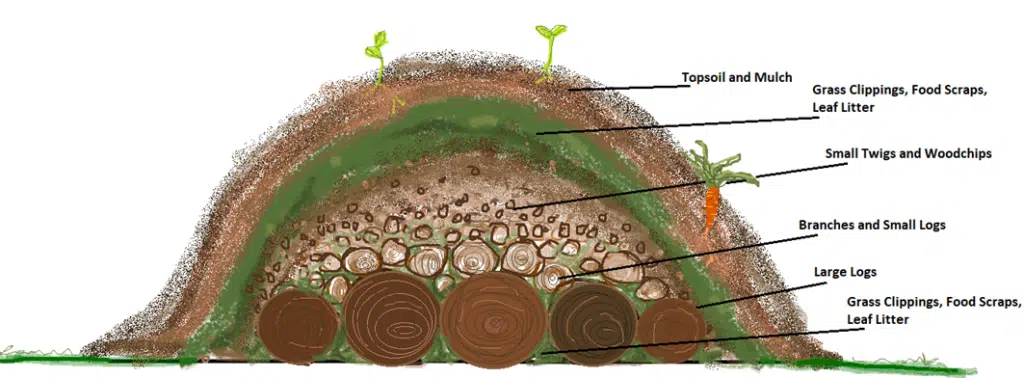
If you’ve been out walking around the gardens recently, then you’ve probably noticed the weather isn’t the only thing that’s been changing! One of the Arboretum’s Core Natural Areas (the relatively unmanaged forest fragments located within the maintained garden areas) has undergone some stark changes. Site 4, nestled between the Hedge Collection and the Shelter House, has been cleared of invasive plants and dying trees to make way for an exciting new trial: Hügelkultur.
A Hügelkultur bed is a mounded planting bed that is piled high with layers of wood, organic materials, and topsoil to create a low maintenance, self-sustaining garden bed. It is a centuries-old German horticultural technique that directly translates to “hill or mound culture” and is designed to break down over a 5-7 year time frame, providing increased nutrients, moisture, and heat retention as it decomposes. Eventually, this Hügelkultur bed will function as an onsite nursery space where wild collected seeds can grow and acclimate to the actual conditions of the site before being planted throughout the space.
As a year-long AmeriCorps member serving as the Arboretum’s Core Natural Areas Assistant, I have been given the unique opportunity to take part in the process of turning these previously forgotten sites into edible food forests. Hügelkultur fits perfectly into this concept as it gives new life to resources that may otherwise be thrown in a dump or chipped with diesel-powered machinery.
Below is a photo walkthrough of the mound-building process up to the present:

Site 4 in early summer, fully leafed-out and teeming with invasive species such as multiflora rose, common buckthorn, porcelainberry , and much more.

Invasives management continued well into the fall and resulted in a cleaner-looking site with mostly native species remaining (including red-twig dogwood, witch hazel, sassafras, and tulip trees). Now, the few planted exotic trees that grace the site have become much more visible and can stand proud.

In addition to removing dead and dying ash trees, many smaller, weaker trees with poor form were felled. Not only did these trees lack aesthetic value, but they did not further the end goal of the site in becoming a plentiful food forest. Another reason for tree removal was to cut a sightline out to Blueberry Pond in the hopes of attracting visitors to explore beyond the mound and enjoy some of the lesser visited areas of the Arboretum. The downed trees were then sorted by size and stacked, destined for the Hügelkultur mound.

Taking advantage of a sunny winter day, the Horticulture team completed a successful group workday cutting and piling more trees and woody debris for the mound.

With an abundant supply of freshly cut wood, older logs needed to be acquired in order to provide the mound with varying levels of decay. In a labor of love and a display of strength, these decaying stumps were hand rolled into a loader, dropped into a dump truck bed, and driven onto the site.

The mound began to take shape as stumps and logs were put into place. This Hügelkultur bed will have a slightly curved shape to optimize heat and moisture retention and is positioned to face south (ish) for optimal sun. In addition, the mound has been perfectly placed at the base of a slope to collect surface runoff.

After the large log layer, progressively smaller sized wood will be added until the top wood layer is comprised of twigs and wood chips. Between the woody layers, organic matter (such as, leaf humus and compost) will be added to increase nutrient content and aid in proper decomposition. However, the recipe for a healthy hügel is flexible! Organic matter can come from a myriad of sources including food scraps, grass clippings, manure, and any herbaceous plant material.

Currently, the mound remains in a state of organized chaos. In an attempt to repurpose some muck from a recent pond dredging, this sludge was dumped into site 4 in the hopes of mixing it with woodchips and adding it atop the mound. Unfortunately, this proved nearly impossible, as we quickly discovered that our pond muck (which would have been an excellent source of nitrogen and carbon) was rich with heavy clay instead of the living plant material and decaying leaves we had expected. This small misstep however, did provide our wonderful Excel-TECC students with an opportunity to flex some muscle and salvage what could be used from the muck.
Interesting in learning more? Check out our Hügelkultur update from summer 2023.

Hannah Goulder













